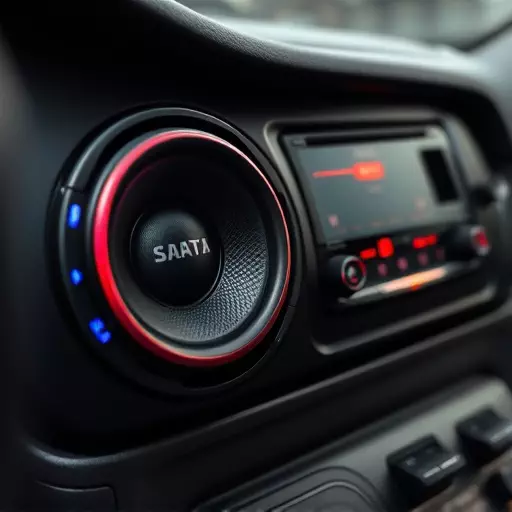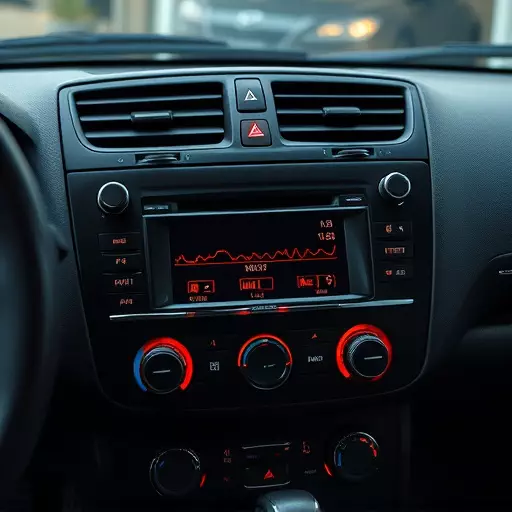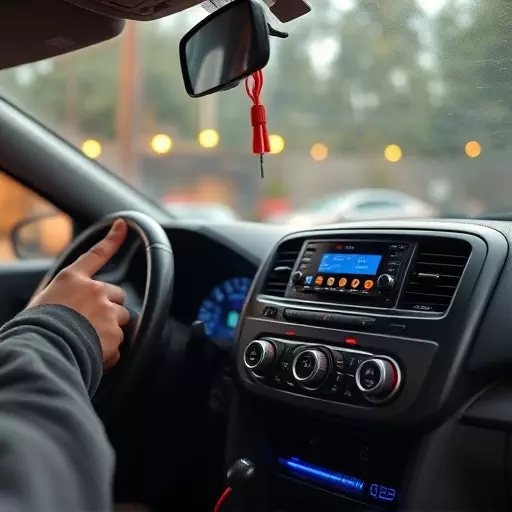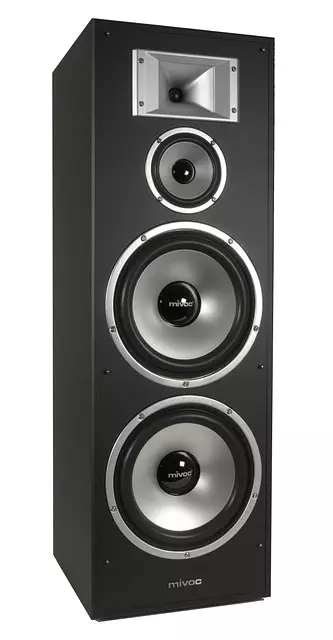Voice command systems in Toledo cars can cause various audio issues, including lack of speaker sound and static/distortion during playback. Basic troubleshooting involves checking connections, volume settings, cables, and maintenance. If problems persist, such as ongoing static or distorted audio, further checks on speakers, internal components, and electronics are needed. For complex issues, professional car audio system troubleshooting is recommended for Toledo vehicles.
Troubleshooting Voice Command Issues in Your Car Audio System
Are you experiencing voice command failures in your Toledo car audio system? Understanding common problems like no sound from speakers or static/distortion can be the first step towards a solution. This guide covers basic troubleshooting methods, such as checking connections and power supply, to advanced techniques including audio settings adjustment and firmware updates. By following these steps, you’ll enhance your car’s voice recognition accuracy. If issues persist, knowing when to seek professional help ensures your Toledo car audio system receives the expert care it needs.
- Understanding Common Voice Command Issues
- – Identifying no sound from speakers
- – Recognizing static or distortion in audio
- Basic Car Audio System Troubleshooting Steps
Understanding Common Voice Command Issues

Voice command systems, while convenient, can present a range of issues for car audio system users in Toledo. The most common problems include a complete lack of sound from speakers or experiencing static and distortion during playback. No sound from your speakers could be due to various reasons, such as a faulty connection, incorrect wiring, or misaligned settings within the car audio system troubleshooting process. On the other hand, static or distortion in audio is often indicative of background noise interference, signal degradation, or internal component malfunction.
Identifying these issues requires a systematic approach, including checking audio sources, ensuring proper volume levels and equalization settings, and inspecting cables for any visible damage or loose connections. Regular maintenance and timely repairs are crucial to prevent such problems from escalating, ensuring optimal performance of your car’s audio system.
– Identifying no sound from speakers

If your car’s audio system in Toledo is experiencing voice command issues and there’s no sound coming from the speakers, start by performing a basic check. Verify that all speaker connections are secure and properly seated. Loose or damaged wires can cause a lack of audio output. Additionally, inspect the power supply to ensure it’s functional; a dead battery or faulty alternator might prevent the system from working altogether.
If your car audio system still doesn’t produce any sound, static or distortion could be the culprit. Try resetting the system by unplugging it for a few minutes and then repluging it. This can often clear temporary glitches. Moreover, check for any visible signs of damage to the speakers or internal components, as physical harm can lead to audio problems. If external factors aren’t at play, there might be an issue with the amplifier or head unit, requiring further car audio system troubleshooting.
– Recognizing static or distortion in audio

When troubleshooting your car audio system in Toledo, one common issue that many drivers face is static or distortion in the audio. This problem can manifest as a high-pitched whine, crackling sounds, or a general lack of clarity in the music or voice commands. To identify this issue, listen carefully for any unusual noises when you turn on your car stereo or use voice commands. If you notice static or distortion, it could be an indication of several potential problems.
The first step is to ensure that all connections are secure and properly seated. Check the speakers and audio cables for any visible damage or loose ends. Sometimes, a simple reconnect can resolve the issue. Additionally, consider cleaning your car audio system components, especially if there’s dust accumulation. Static noise can also be caused by electrical interference from other devices, so keep your phone and other electronics away from your stereo when in use. If the problem persists, it may be time to consult a professional for further car audio system troubleshooting.
Basic Car Audio System Troubleshooting Steps

If your car’s audio system isn’t functioning properly, such as no sound from speakers or static/distortion in audio, there are several basic troubleshooting steps to follow before assuming a more complex issue. Start by checking the power supply; ensure all connections are secure and tight. Verify that each speaker is receiving power by inspecting the fuse related to the speaker circuit. A blown fuse will prevent any audio output from that specific speaker. Next, examine the audio source for any discernible damage or loose connections. This includes testing the headunit (radio) itself and ensuring it’s properly seated in the dash.
Additionally, inspect the amplifier for signs of damage or overheating, as well as checking the wiring harness for damaged or exposed wires. In some cases, a simple reboot might resolve minor glitches. Try turning off the car, waiting a few moments, then restarting it to see if this clears any audio issues. If these initial checks don’t yield results, it may indicate a more complex problem that requires professional assistance, such as issues with the head unit, amplifier, or even the car’s electrical system in the case of a Toledo vehicle.


